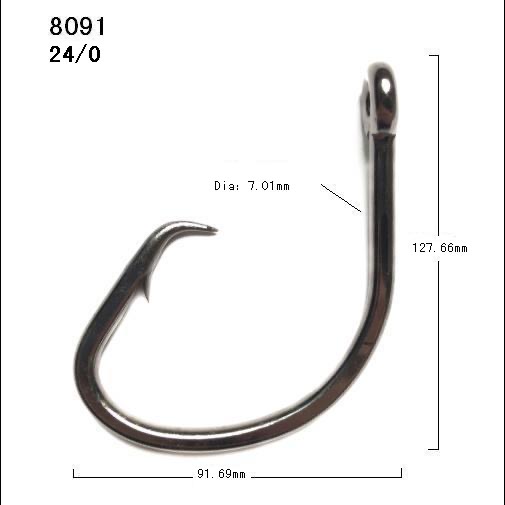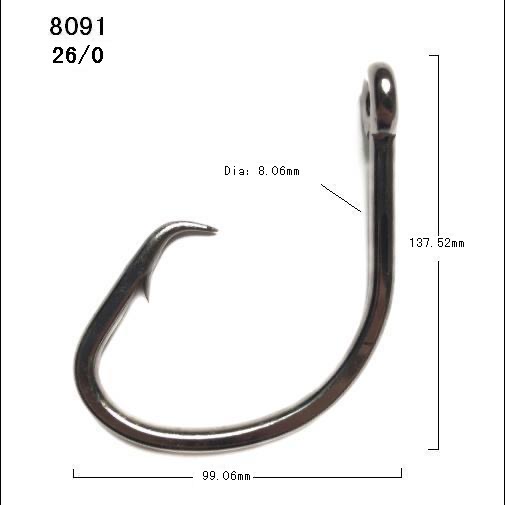Deep-sea tuna fishing demands precision, strength, and the right tools to tackle these powerful ocean predators. Among the most critical components of your tackle setup is the hook. Choosing the right heavy-duty tuna hook can mean the difference between a thrilling catch and a lost battle. In this guide, we’ll explore the essential features of heavy-duty hooks, how to select the best options, and tips for maximizing your success on the water.
Key Features of Heavy-Duty Tuna Hooks
-
Superior Material and Durability
Tuna are renowned for their explosive strength and relentless fights. Hooks must withstand extreme pressure without bending or breaking. High-quality stainless steel or carbon steel hooks are preferred for their corrosion resistance and robustness. These materials ensure the hook retains its integrity even during prolonged battles with giants like bluefin or yellowfin tuna. -
Optimal Hook Design
-
Penetration Power: Sharp, needle-like points and wide gaps are critical for piercing the tough, bony mouths of tuna. Circle hooks are particularly effective for reducing gut-hooking and improving catch-and-release survival rates.
-
Wire Thickness: Heavy-gauge wire prevents straightening under pressure. For trophy-sized tuna, thicker wire hooks are recommended to handle their sheer power.
-
-
Balancing Size and Stealth
While intuition might suggest larger hooks for big fish, smaller hooks often outperform in tuna fishing due to the species’ sharp eyesight. Opt for compact designs that blend seamlessly into live or dead bait, increasing strike rates. Match hook size to your bait—larger baits for trophy fish require proportionally larger hooks.

Selecting the Right Hook for Your Target Species
-
Bluefin Tuna: Prioritize heavy-duty circle hooks that balance stealth and strength. These hooks secure a firm hold without spooking the fish, ideal for targeting these cautious giants.
-
Yellowfin Tuna: Adjust hook size based on regional variations. Smaller yellowfin thrive with medium-sized hooks, while larger specimens demand sturdier options paired with bigger baits.
Pro Tips for Using Heavy-Duty Hooks
-
Hide the Hook: Tuna’s sharp vision makes them wary of exposed hooks. Bury the hook entirely within the bait, ensuring only the point is slightly visible.
-
Match Hook to Bait Type:
-
Live Bait: Use lightweight hooks to preserve natural bait movement.
-
Dead Bait or Lures: Reinforced hooks handle aggressive strikes better.
-
-
Set the Hook Correctly: Avoid jerking the rod—allow the tuna to take the bait fully before applying steady pressure to drive the hook home.

circle fishing hooks 26 size chart
Maintenance and Longevity
-
Rinse hooks with freshwater after each use to prevent saltwater corrosion.
-
Regularly inspect for bends, rust, or blunted points. Replace damaged hooks immediately to avoid failures during critical moments.
Sustainable Practices
To promote conservation, adhere to local regulations on hook types and sizes. Circle hooks are increasingly mandated in many fisheries for their role in reducing mortality during catch-and-release. Pairing heavy-duty hooks with proper revival techniques, such as slow-towing exhausted fish to aid recovery, ensures ethical angling practices.
Final Thoughts
Heavy-duty tuna hooks are the unsung heroes of deep-sea fishing. By prioritizing strength, stealth, and species-specific designs, anglers can confidently battle these oceanic titans. Success lies not just in the hook’s quality but in how well it’s matched to your target, bait, and fishing conditions. Equip yourself wisely, and the thrill of landing a trophy tuna will be within reach.
This guide combines expert insights and practical strategies to help you master the art of tuna fishing. For more detailed tips on hook selection or sustainable practices, explore trusted resources and local fishing communities. Tight lines!